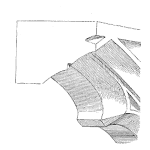
Changes are a part of the evolution of a new design. But managing the timing of changes is important. Figure 1 shows that the cost of making design changes increases rapidly beginning late in development. In well-run projects, design changes are mostly complete by early development. But project teams that ignore reliability often discover the need for changes during lab testing (late development) or commercialization. This is very costly, creates schedule delays, and can lead to brand damage. In Maximizing Oilfield Equipment Reliability, it is stated that Design for Reliability (DfR) programs are used by OEMs to elevate reliability. But DfR activities can also reduce the cost of changes. How is this achieved?

Reliability target. Using application information, the project team can set reliability target(s) for the new product. Setting targets in the planning phase drives early focus on de-risking. And choosing a proven legacy configuration, when possible, reduces design risk immediately.
Design risk assessments. Discovery of design risk is enhanced with risk assessments, which examine configuration, materials, testing programs, interfaces, processes, stakeholder documentation, etc. These accelerate de-risking when conducted throughout development.
Industry Standards and Lab Test Programs. When they exist, industry product standards should be part of a laboratory test plan because they prescribe design and testing procedures, and acceptance criteria, that reflect best practices. But to achieve the highest de-risking prior to commercialization, component, sub-assembly, system integration tests (SIT), and reliability tests (shock, vibe, thermal) may also be indicated. A design risk assessment should cover this.
dFMEA. Design Failure Modes and Effects Analysis is a risk discovery tool for the design. When conducted early in development, dFMEA changes can be implemented cost effectively.
pFMEA. Process Failure Modes and Effects Analysis is a risk discovery tool for processes associated with the design. Examples are processes for assembly and installation. When conducted during development, pFMEA changes can be implemented cost effectively.
TRUTH: DfR programs elevate reliability and reduce the cost of design changes.
This is the 4th in a series of five articles on risk and reliability in downhole applications.
Leave a Reply